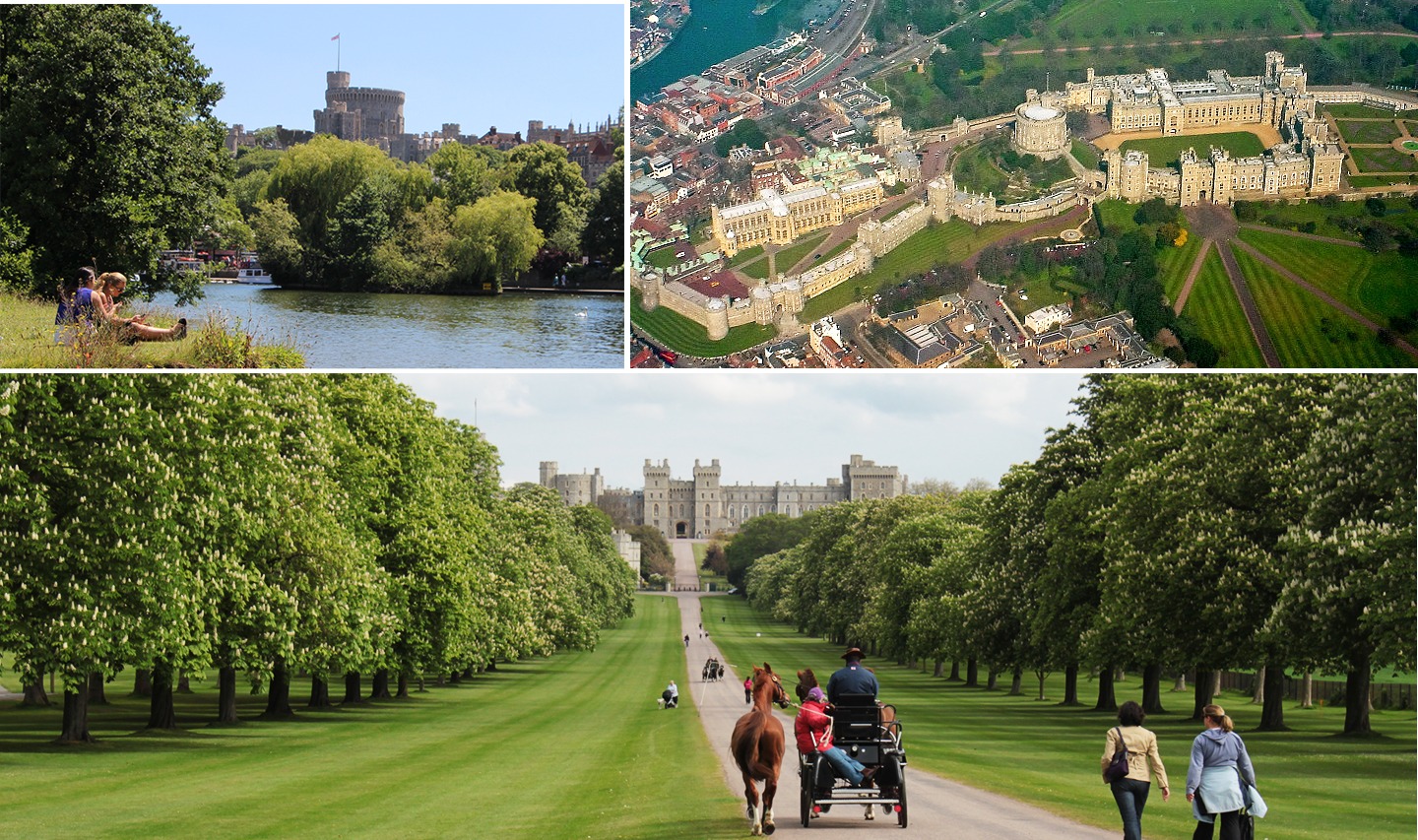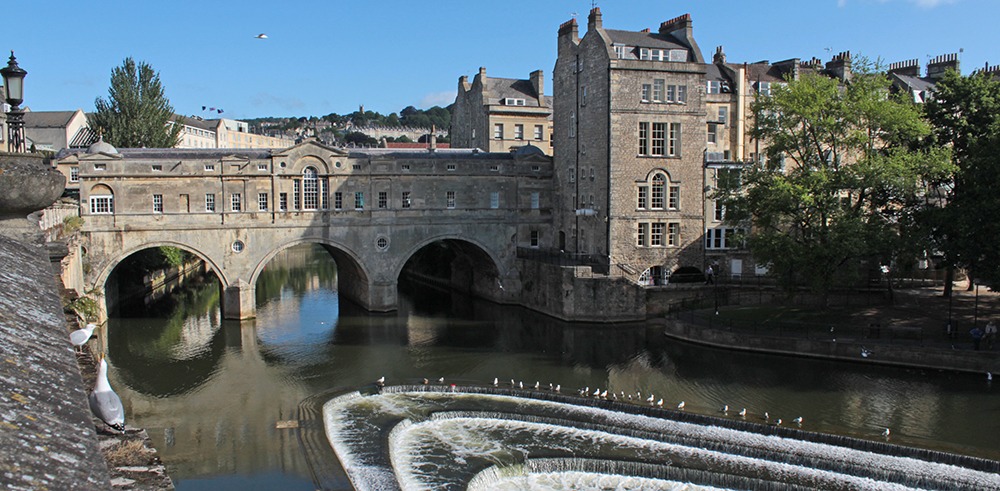The country between Windsor and Bath has long been popular with people who are ‘tired of London’ and many of them have charming gardens made by famous designers. The Windsor to Bath Sisley Garden Tour provides opportunities to see them without the hassles of driving or finding places to stay. The route passes through beautiful countryside, lovely villages and cherished market towns, including Bath, Windsor, Marlborough, Malmesbury and Shaftesbury. The garden tour starts with a pick up from London Victoria Train Station or Heathrow Airport. The week includes visits to:-
Windsor Castle was built after the Norman Conquest of 1066. Set in a great hunting forest, now called Windsor Great Park, it became one of the royal family’s best-loved country homes.
Munsted Wood. This famous garden was the home of Gertrude Jekyll, the most famous Arts and Crafts garden designer and the author of many ever-popular books on planting design. The house was designed by Edwin Lutyens.
The Manor at Upton Grey. Designed by Gertrude Jekyll for a leading figure in the Arts and Crafts movement, the garden is particularly interesting for the planting, which was fully researched and restored by Rosamund Wallinger.
Bury Court. It has a courtyard garden by Piet Oudolf, working with the owner, and a front garden by the minimalist garden designer Christopher Bradley-Hole.
West Green Garden. An old manor house with an admired twentieth century garden by Marylyn Abbott.
Bowood House is one of the best surviving examples of Lancelot Brown’s Serpentine style of garden design. The serpentine lake and encircling tree belt can be seen from the Italian Garden – which was designed as a stage from which to view the surrounding landscape.
Iford Manor was designed by Harold Peto, an Arts and Crafts architect and garden designer. He owned the house and spent many years collecting statues and other features in Italy. The garden is beside a river in a remarkably tranquil, beautiful and isolated valley.
Stourhead is rightly famous as the best example of a ‘landscape garden’ designed to recreate the ‘landscape of antiquity’ as envisioned by Claude Lorraine and other great landscape painters.
Shute House Gardens were designed by Geoffrey Jellicoe, the most famous English landscape architect of the twentieth century.
Abbey House Gardens were designed by a well-known designer who promoted postmodernism in gardens: Ian Pollard. It formed part of Benedictine monastery before Henry VIII dissolved the monasteries and is now a remarakable integration of new and old.
Though not part of the Sisley tour, it is easy to make a post-tour visit to Hampton Court Palace Garden and the RHS Hampton Court Flower Show.
Pinjore Yadavindra Mughal Garden
Pinjore Gardens deserve more recognition as an example of the Mughal style. There is much more which could and should be done but the restoration work already carried out is good and the water features work most of the time. The lower section of the garden is of particular interest and with more work could become India’s best example of the ‘fruits and flowers’ approach to planting design which was once the predominant character of Indian gardens. Constance Villiers Stuart, who made the first serious study of Indian gardens, was well aware of this and wrote about Pinjore in her book: see C.M Villiers Stuart Gardens of the Great Mughals .
Edwin Lutyens read Villiers Stuart’s book when working on the design of New Delhi and Le Corbusier visited Pinjore when working on the design of Chandigarh. She surely influenced Lutyens design for the garden of the Governor’s Place in Delhi – and Corbusier might have done a much better job of Chandigarh’s Capitol Complex if he had learned more from Pinjore.
Should London be a National Park?
The current proposal for London to be a National Park appears, to me, ill-conceived. It is a great city and its open space planning needs staffing and funding, but I can’t see sufficient kinship with the national park concept. Let’s recall the history of the concept. It began in America as an idea for giving the new world something of similar cultural significance to the ‘monuments’ of the old world. So they chose tracts of unspoiled scenery. This appealed to the British. We did not have any unspoiled scenery so we chose areas of high scenic quality instead. Some parts of London undoubtedly do have high scenic quality – but they are already designated as conservation areas and enjoy protection within the planning system. What London does need is a Landscape Authority to get on with work on the All London Green Grid. If London were to have something more on like a National Park Authority it should be a Thames Landscape Agency, as argued in the above video. The Port of London Authority is making a mess of managing the river for anything other than commercial traffic.
Dry stone walling in Crossbones Garden, a 2015 Chelsea Fringe event
Dry stone walling is flexible; it does not use mortar; it is good for wildlife; it is a sustainable. The only minus points arise if fuel is used for quarrying and transporting the stone.
This video is of a Chelsea Fringe event in Crossbones Garden, near London Bridge Station. Participants receive a certificate of attendance at the end of the session. John Holt is a great teacher.
Lee Rigby Memorial bikers ride from Greenwich Park to Woolwich 22 May 2015
In addition to many other design objectives, public parks should be designed as good places to hold public events and demonstrations. The main avenue in Greenwich Park was not designed for this purpose but serves it very well, as here for a memorial event for a British soldier, Fusilier Lee Rigby of the Royal Regiment of Fusiliers, who was attacked and killed by Michael Adebolajo and Michael Adebowale near the Royal Artillery Barracks in Woolwich. Rigby was off duty and walking along Wellington Street. Two men ran him down with a car, then used knives and a cleaver to stab and hack him to death. Armed police officers arrived five minutes later. The assailants, armed with a gun and cleaver, charged at the police, who fired shots that wounded them both. They were apprehended and taken to separate hospitals. Both are British of Nigerian descent, raised as Christians, who converted to Islam (info from Wikipedia).
Review of the show gardens at the 2015 Chelsea Flower Show
Please see this page for video reviews of selected show gardens.
I’ve been too hot at Chelsea and I’ve been too cold. On Press Day, in 2015, I was too wet and too windswept. When the sun came out in the afternoon, the Press had to leave so that the Royal Family could enjoy the show. I’m not a republican, yet, but the rain did fall like stair rods. So what of the design quality of the Show Gardens? I thought some of the Fresh Gardens, on Royal Hospital Way, were better than most of the large gardens on the Main Avenue – some of which could be described as Stale Gardens.



